Standing beside the Grand Canal, we watched a sleek black gondola glide under the famous Rialto Bridge—its gondolier in a red-striped shirt effortlessly navigating the current. It was everything you’d imagine Venice to be.
For many, a gondola ride is a once-in-a-lifetime, bucket-list experience. The kind you picture from movies: drifting through the canals at sunset, serenaded by Italian opera as you gaze up at centuries-old buildings. It sounds magical.
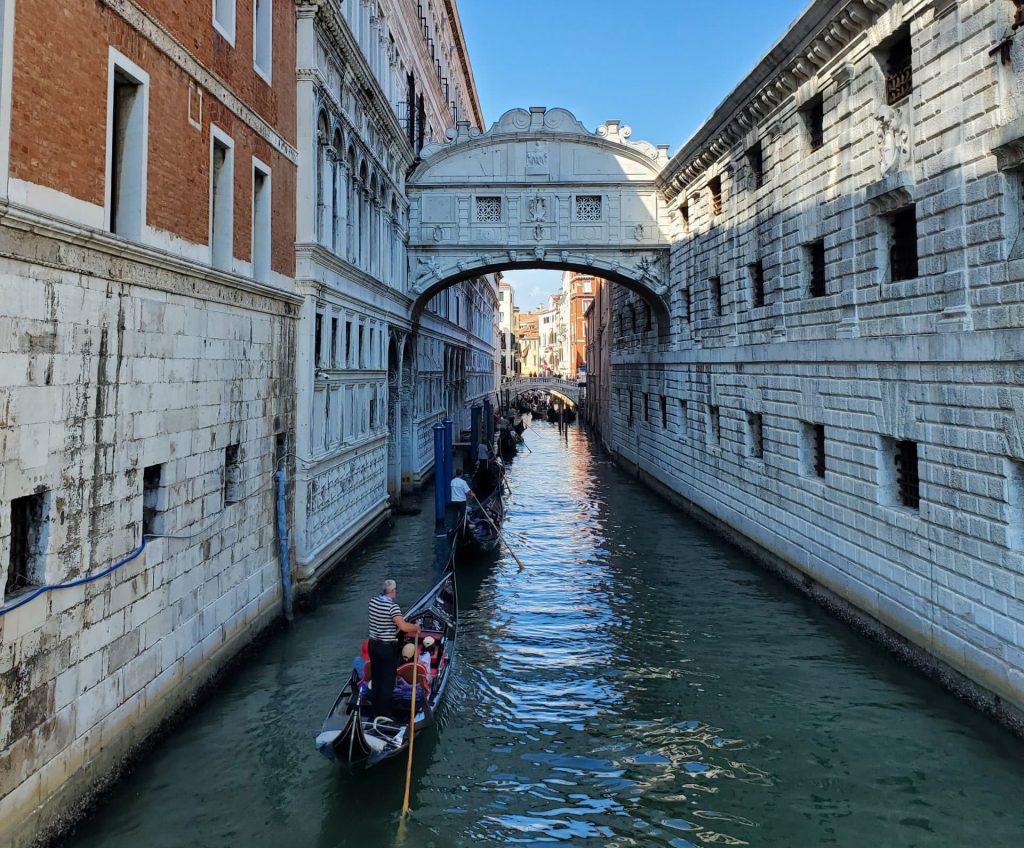
But let’s be honest—if you’re travelling with kids, that dream may look a little different.
We still wanted the gondola experience, but something that kept our kids engaged. That’s when we found Row Venice and booked a gondolier lesson instead of a traditional ride. Not only did we learn how to row a Venetian gondola, but we also received a hands-on history lesson, a glimpse into the art of gondola making, and an unforgettable family experience. Our boys said it was their favourite part of Venice—and I must agree.
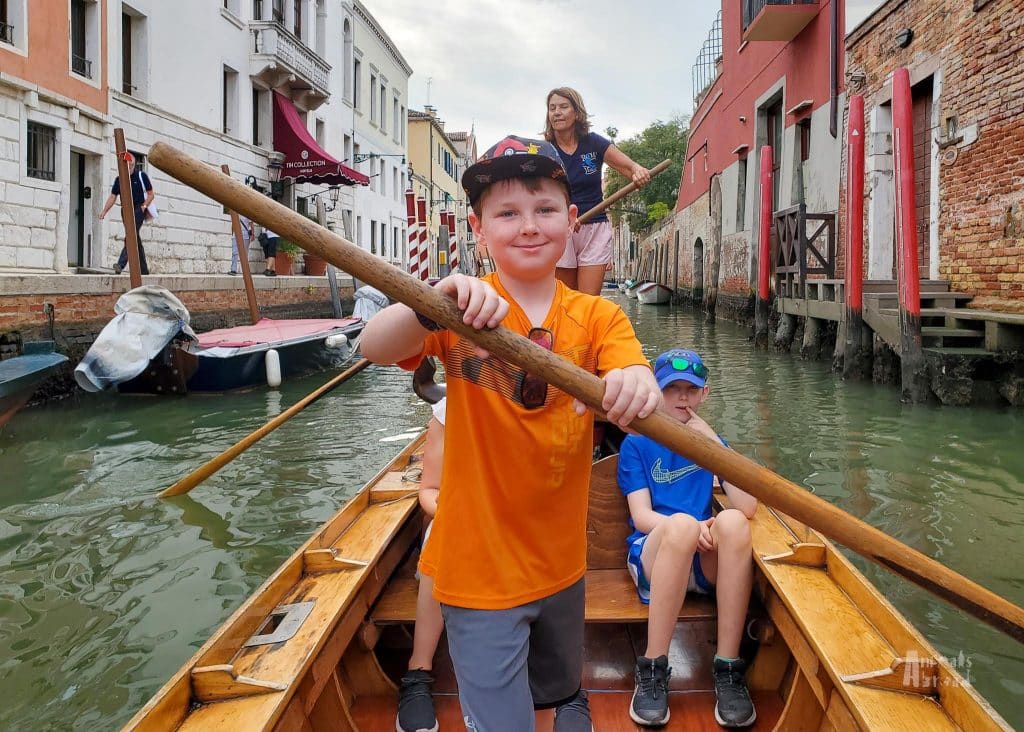
A Brief History of Gondolas
Gondolas have been a part of Venetian life for nearly 1,000 years. These flat-bottomed boats were originally designed to navigate the shallow canals and lagoons of Venice. By the 1600s, around 10,000 gondolas transported goods and passengers throughout the city.
Over time, as steamboats and other forms of transport took over, the number of gondolas dropped dramatically. Today, gondolas are mainly used for tourism, but they still symbolize the city’s heritage.
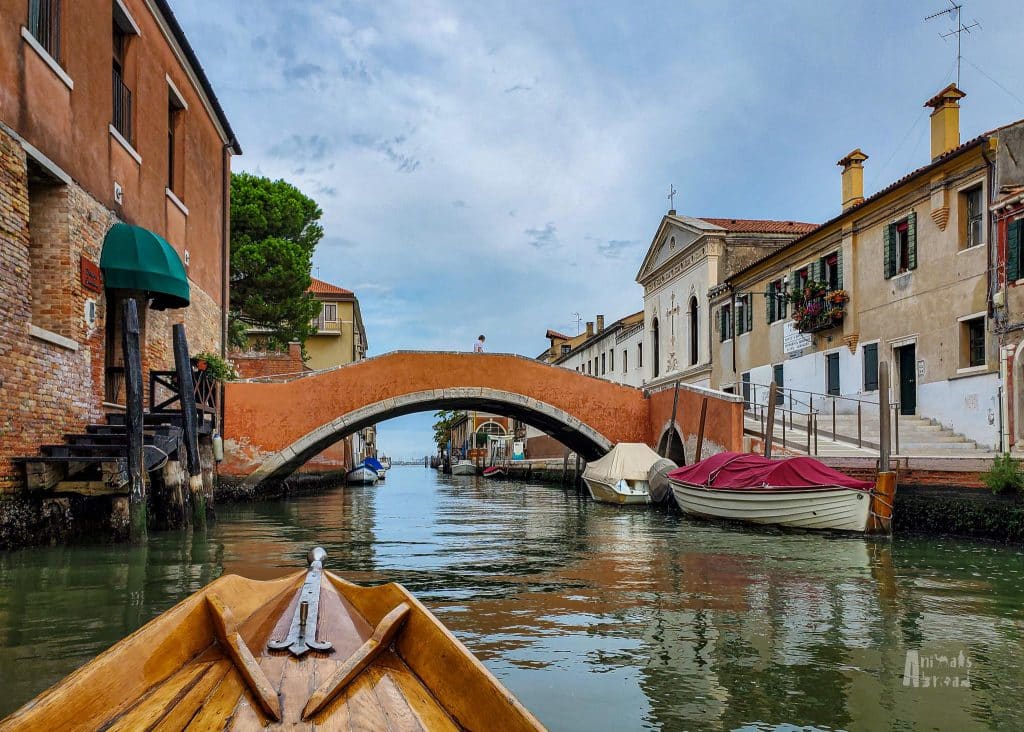
Design Secrets of the Gondola
Each gondola is a handcrafted work of art, made from eight different types of wood—or nine if you count the beech oar. The boat is assembled from 280 individual pieces and can take up to two months to build.
Fun Facts: Gondolas are asymmetrical. The left (port) side is broader than the right, which helps balance the gondolier who stands and rows on one side only. And all gondolas are painted black—by law. In the 17th century, Venice’s Doge decreed that the colour be black to reduce showy displays of wealth among noble families.
What It Takes to Be a Gondolier
Our lesson was just a taste of what it takes to become a gondolier. The real path includes:
• 400+ hours of training at the Arte del Gondoliere school
• A rigorous exam covering rowing skill, canal navigation, Venetian history, landmarks, and language skills
• Membership in the Gondolier’s Guild, which regulates uniforms, stations, and permits
Each licensed gondolier is assigned a station and must wear a striped shirt (red or blue), black trousers, black shoes, and—optionally—a straw hat. With only 433 gondolier licenses in Venice, the profession is respected and tightly held. Permits are usually passed down through families, though some are occasionally sold—reportedly for up to €500,000.
Fun fact: In 2010, Giorgia Boscolo became the first female gondolier in Venice.
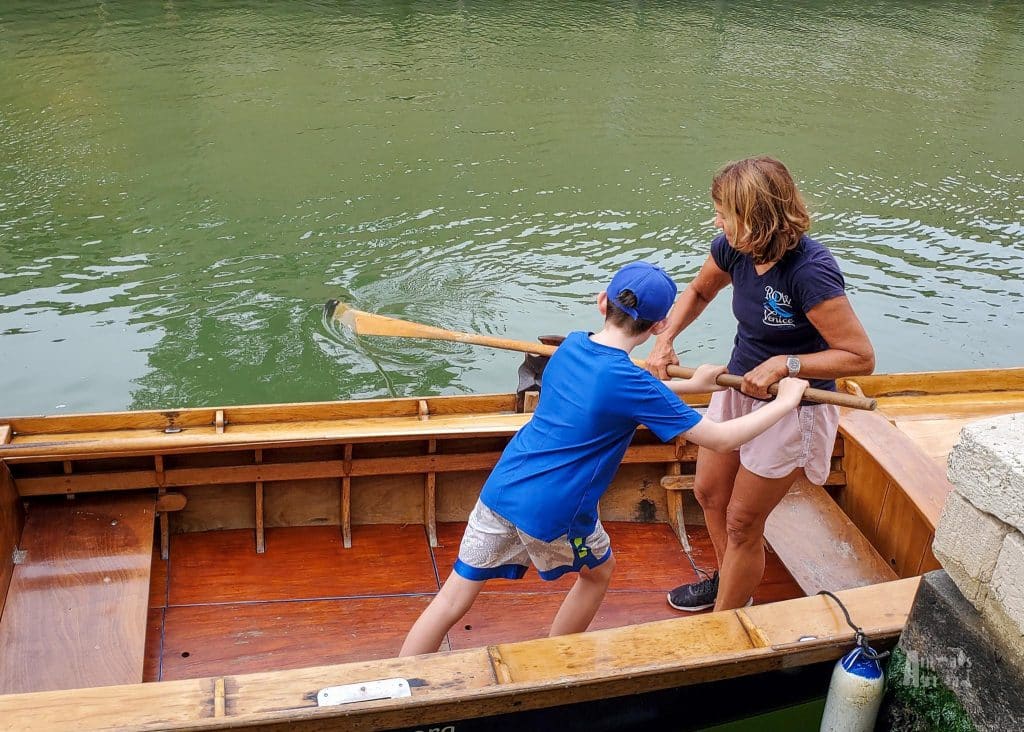
Our Row Venice Experience
Our 90-minute family lesson with Row Venice began with a quick demo on land. Our instructor showed us how to rotate the oar and shift our weight—essential techniques in Venetian rowing.
Once in the boat, we took turns rowing from the middle position to get a feel for the rhythm. Despite the gondola’s size, it felt stable, and we quickly relaxed, relieved that we probably wouldn’t tip over!
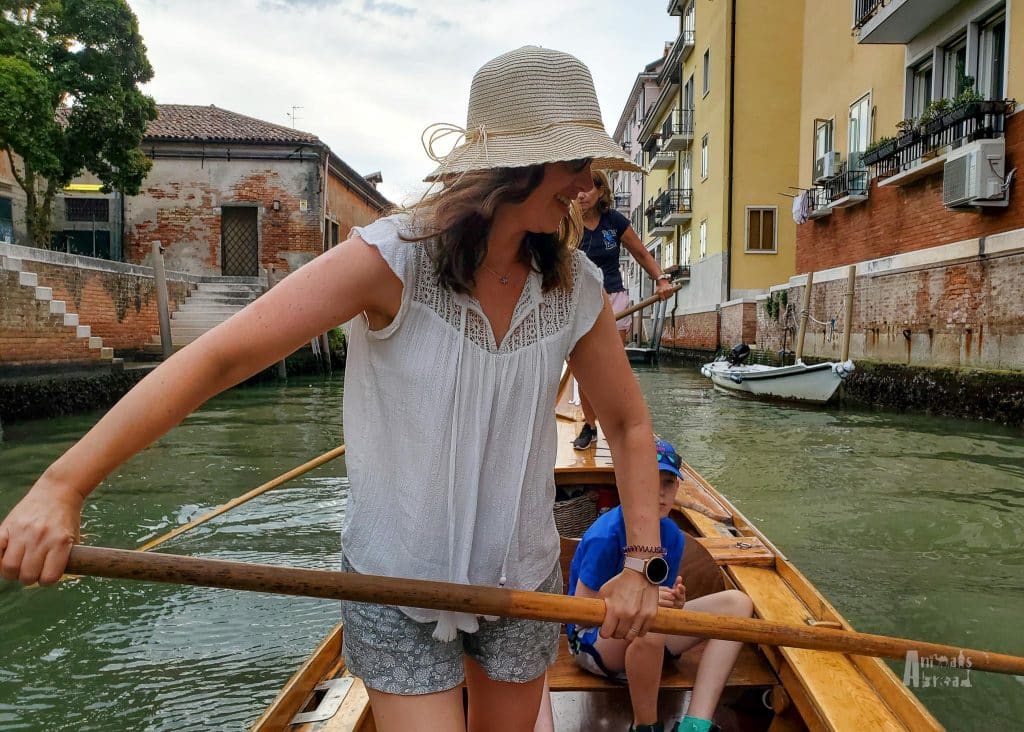
Even though we’re experienced with kayaking and paddleboarding, Venetian rowing is totally different. Unlike paddling on both sides, gondoliers row only on the right and rotate the oar to keep the boat moving in a straight line.
The trickiest part?
Keeping the oar inside the fórcola (the curvy oarlock). It slipped often at first, disrupting our flow. But later, when we tried the stern position, our instructor tied the oar in place, making it much easier to control.
By the end of the lesson, we’d all had a turn in the “gondolier’s spot” at the stern, feeling pretty proud of ourselves, even if we were far from professional.
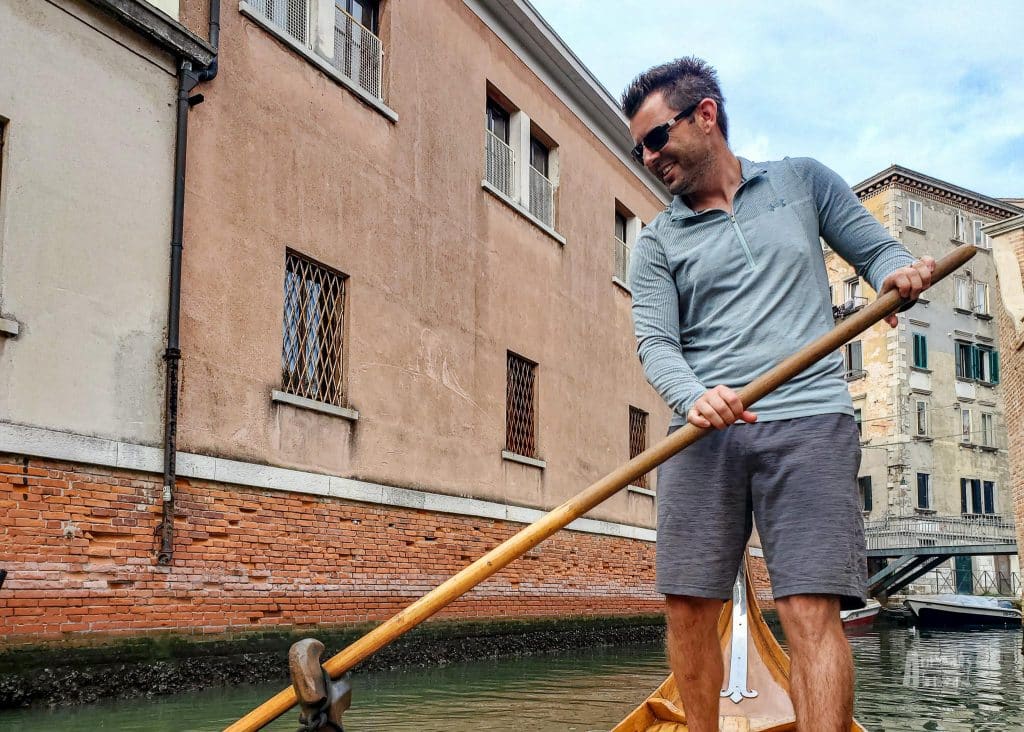
Why It’s Great for Families
This lesson was a huge hit for our boys. They got to be active, learn a new skill, and hear cool facts about boats and Venice—all while standing in a gondola! Kids as young as four can join with assistance, and by the age of five, they can row independently.
For families with kids who love hands-on activities or just trying something new, this beats a passive gondola ride any day.
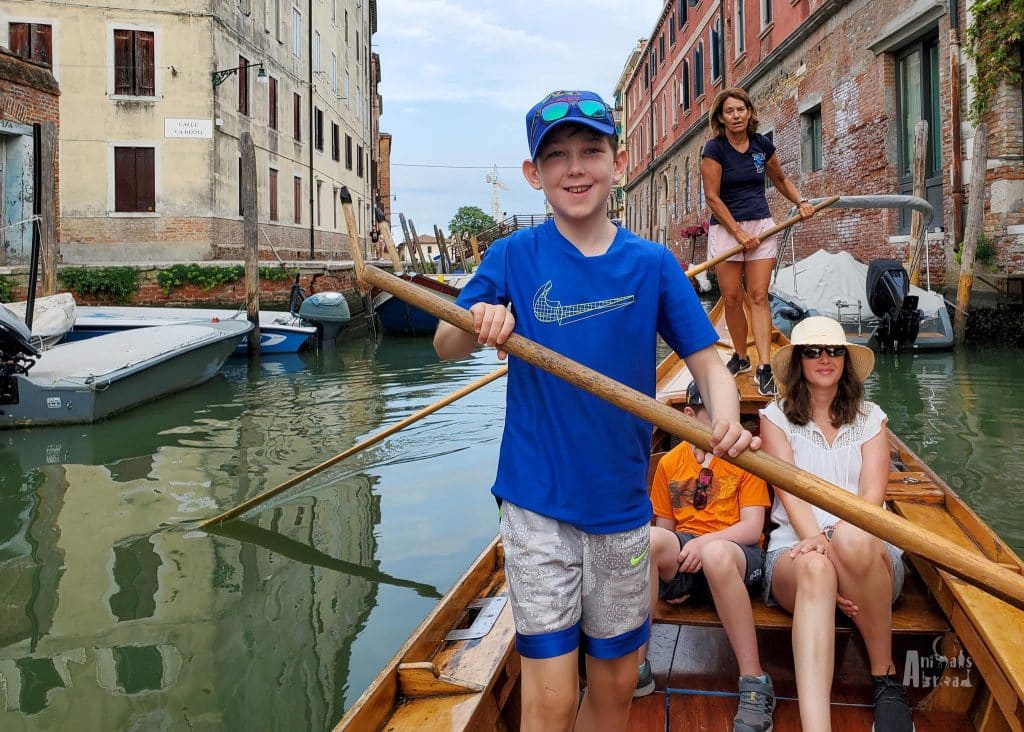
Bonus: Gondola Racing in Venice
Gondolas aren’t just for tourists. Venetian rowing is also a competitive sport with a long history. Regattas—rowing races—take place in the canals and lagoon, some dating back to the 13th century. More than 100 regattas happen between April and September, so if you’re visiting during those months, keep an eye out.
Know Before You Go
• Row Venice is a non-profit supporting female athletes and preserving traditional Venetian rowing.
• Cost: Tours vary, however our 90 minute lesson was €140
• Best time: Book on a Sunday, when canal traffic is lighter
• Age range: Kids younger than four can join; kids 5+ can row by themselves
• Tip: Wear comfortable clothes and expect some splashes
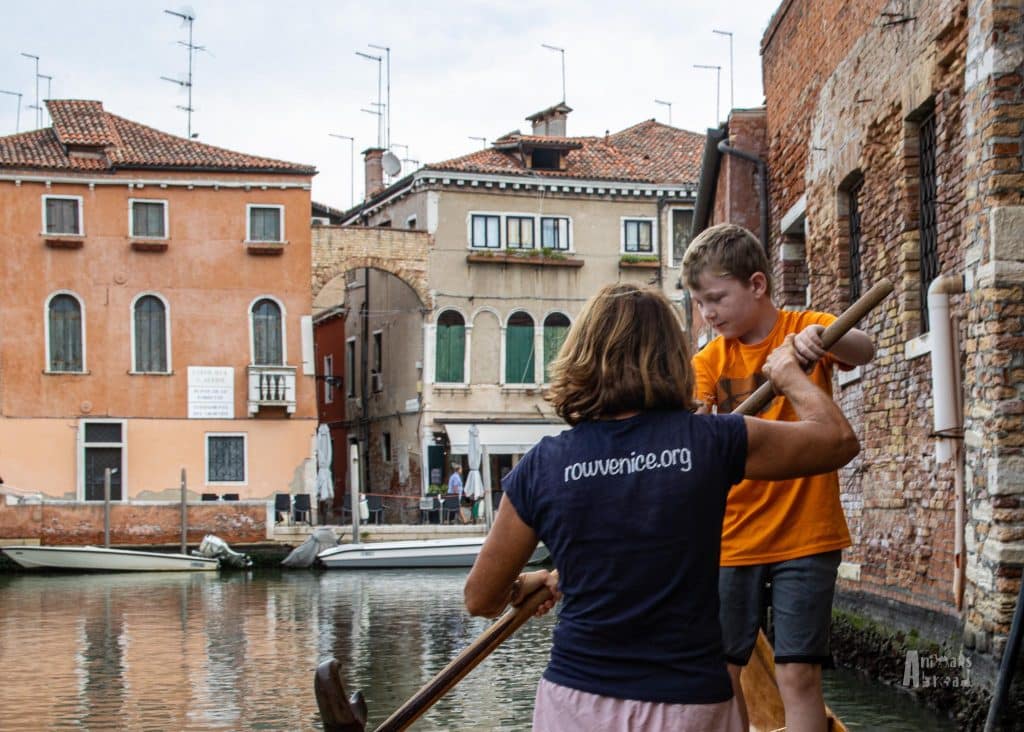
A New Perspective of Venice
Learning to row a gondola gave us a completely different perspective of Venice—not just as tourists, but as participants in a living tradition. It was an active, educational, and fun experience. Most of all, it gave us a deeper appreciation for a profession that’s often seen as a postcard image but is rich in skill, pride, and history.
If you’re looking for something unique and family-friendly in Venice, skip the traditional ride and pick up an oar instead. You might just find your favourite memory floating along the canals.
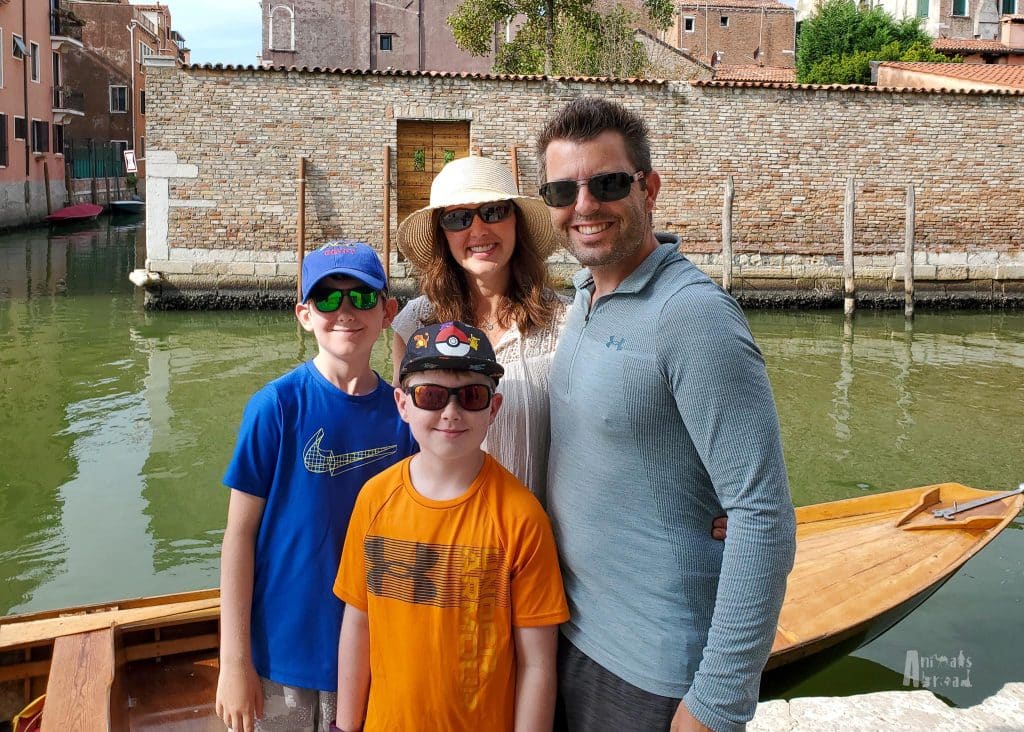
Ready to Explore Italy?
Check out these related posts to help plan your trip:
• Fun Things to Do in Venice with Kids
• 4-Day Itinerary in Rome with Kids
• Inside the Colosseum: Touring Ancient Rome with Kids
• The Vatican with Kids: What to Expect & How to Plan
• Roaming Around Rome: A Walking Tour for Families

